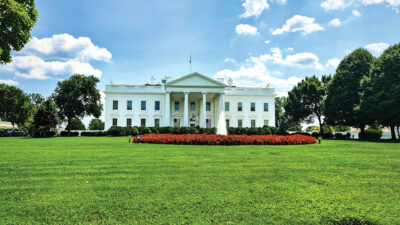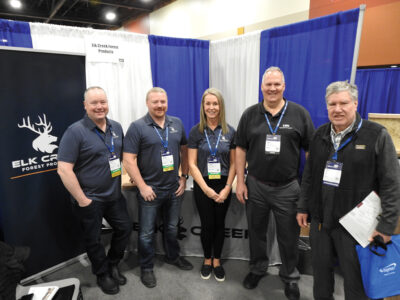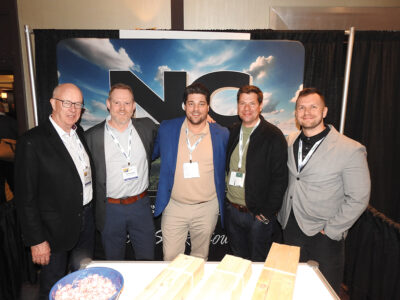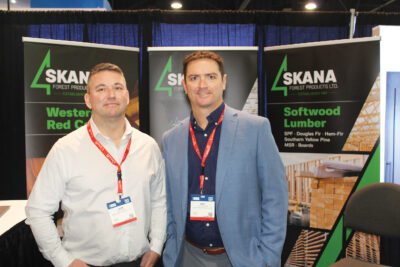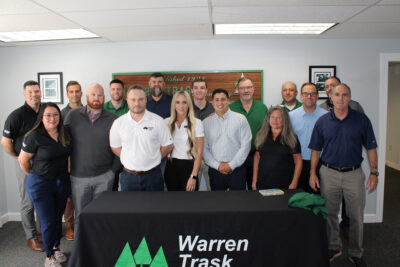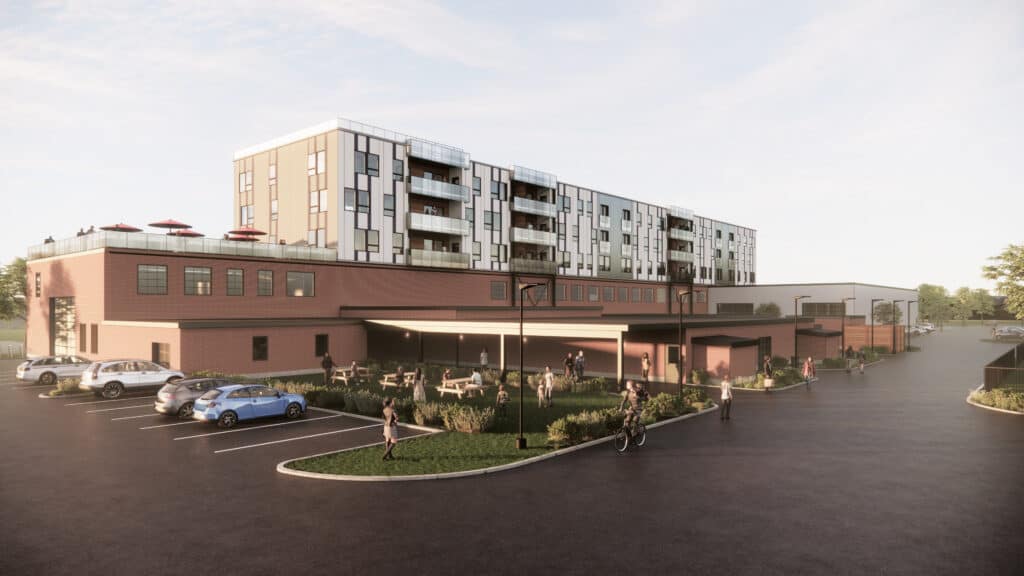
Big changes are coming to cities, and the Softwood Lumber Board (SLB) is working to ensure that Softwood lumber is poised to make a lasting impact while realizing new market opportunities.
Urban populations have been growing exponentially for years. In 2023, the World Bank estimates that 4.4 billion people (or 56 percent of the global population) reside in cities, up from 751 million, or 30 percent, in 1950. But both the World Bank and United Nations agree that by 2050, nearly 70 percent of the world’s population will be an urban one.
Once built, however, cities don’t adapt physically as readily as they add population. Infrastructure and land use patterns are often rigidly defined for generations, leading to sprawling, inefficient, and unsustainable development.
Continuing to expand out won’t solve the crisis of how to house so many more people in so little space so quickly, but expanding up could help ease the pressure—increasing density in urban cores in a sustainable way by renovating and vertically expanding existing structures with low-carbon building materials like wood.
Mass timber is uniquely suited to use in these “overbuilds” because of its lighter weight relative to other structural materials (critical when adding additional stories to existing foundations); its offsite fabrication (minimizing site deliveries and the resulting impact on neighborhood traffic flows); and its speed to construction (minimizing impact on tenants in the existing structure). And that’s before considering the sustainability of the lower embodied carbon of wood, and of avoiding complete demolition and reconstruction to increase density on a site.
Mass timber overbuilds are already getting attention in the U.S., providing proof of concept that this approach is viable for a variety of building types.
ACME Timber Lofts | New Haven, Connecticut
One of the major areas overbuilds can help create additional density is in urban residential conversion—there is already a housing crisis in most urban centers, even while many commercial and industrial spaces lie vacant. In New Haven, Connecticut, Gray Organschi Architecture and Spiritos Properties prove that mass timber overbuilds can make this density a reality—even on historic structures. ACME Timber Lofts is the preservation, restoration, and vertical expansion of a 150-year-old, 3.5-story unreinforced-masonry former furniture business into a 5-story, 18-unit multifamily building over ground-floor retail.
The expansion uses a cross-laminated timber (CLT) stair-and-elevator core and a two-story CLT addition to transform a building that has lain empty since 2017 into one that provides housing with easy access to transit, Yale University, and the city’s growing biotech industry.
80 M Street | Washington, D.C.
Built in 2001, 80 M Street SE was among the first office buildings in Washington, D.C.’s Capitol Riverfront District. At seven stories, it was a perfect candidate for vertical expansion—and needed a differentiator to set it apart in a crowded commercial market. To accomplish both goals, architecture firm Hickok Cole chose mass timber for a 100,000-square-foot, two-story overbuild—a first of its kind for the city.
Hickok Cole’s Thomas Corrado told SLB-funded program Think Wood that the existing building could not handle a concrete overbuild. “We would have had to beef up the existing structure below, which would have been extremely expensive and disruptive to the tenants,” he said. Timber’s light weight also allowed the team to deliver the project faster with less impact to tenants. WoodWorks—another SLB-funded program—provided project support, helping to realize a mass timber project that increased leasable density in the same footprint—proving that overbuilds are a viable strategy for commercial properties, as well as residential.
Up@310 Lofts | Keene, New Hampshire
For mass timber overbuilds to scale in the U.S., developers and local building authorities need to understand it as a viable, safe, sustainable, and replicable solution, which is why the SLB and the USDA Forest Service selected Up@310 Lofts as one of five projects granted funding in the 2023 Mass Timber Competition. The project, from Lignin Group and Banwell Architects, includes a 62,250-square-foot vertical addition to an existing mixed-use steel structure in Keene’s Business Growth and Reuse district, which suffers from a lack of residential units.
The three-story mass timber overbuild will add 57 housing units to the two-story steel structure. Moreover, as a part of the grant the team will compile information about why mass timber is the best solution for this overbuild—research that will be made available to the building industry to encourage further adoption of the model.
Marshalling Resources to Increase Opportunities for Wood
There is still work to be done before widespread adoption of mass timber overbuilds is a reality. Engineering firm Arup noted that deploying the solution at 80 M St required special dispensation from the D.C. building authorities because the District has not yet adopted the 2021 International Building Code allowing mass timber buildings up to 12 stories at the time (it has since become one of 28 states and jurisdictions to do so—thanks in no small part to the education efforts of another SLB-funded program, the American Wood Council).
But the idea of building up as a solution to density continues to gain traction—at home as well as abroad. In fact in 2020, England codified the idea that building up may be the only way to help solve its housing crisis by allowing many single- and multifamily properties to increase their height up to two stories without requiring special planning permission.
With 2050 and its reality that 7 out every 10 will live in urban centers fast approaching, the interest in building up—quickly and sustainably—will only increase. The Softwood Lumber Board and its funded programs will continue to conduct research, collect case studies, and resources to encourage more widespread adoption of mass timber for use in this sustainable approach to densification, so that we grow smarter towards a more urbanized future.



